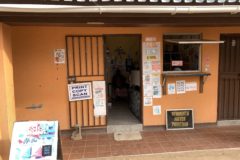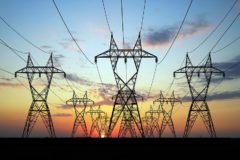South Africa’s national power utility Eskom has warned that it might need to implement high stages of load shedding in order to meet surging demand during the winter months.
Yesterday morning during the System and Winter Outlook briefing, Eskom cautioned that the power system is severely constrained and there is a high risk of elevated stages of load shedding in winter.
Giving a performance overview, Eskom Generation group executive, Bheki Nxumalo, said that the power generating system continues to show poor performance, with frequent plant breakdowns subjecting the country to elevated stages of load shedding. These shortages will persist throughout the winter months, necessitating the continued implementation of load shedding.
Nxumalo added that unavailability of the three units at Kusile Power Station and the unit at Koeberg 1 Power Station have removed 3,080MW of capacity from the grid, equivalent to three stages of load shedding.
“We are striving to reduce plant breakdowns to 15,000MW or below for the winter period to keep loadshedding at lower stages. We, however, concede that this will be extremely hard given the unreliability and unpredictability of the power generating fleet and that we are already about 3,000MW worse off this winter compared to the same period last year,” said Nxumalo.
According to the outlook, with breakdowns or unavailable capacity due to unplanned maintenance at 15,000MW, loadshedding might be predominantly implemented at Stage 5 for the winter period. Should breakdowns reach 16,500MW, loadshedding might be implemented at Stage 6. If unplanned outages reach an average of18,000MW, loadshedding might be required every day and might be implemented up to Stage 8. Eskom emphasised that the 18,000MW scenario that could culminate in Stage 8 is an ultimate worst case scenario.
“We fully comprehend the adverse impact that rotational load shedding has on South Africa’s already fragile economy and its people. We are doing everything to mitigate the intensity of rotational load shedding including taking lessons from the rest of the world. We have seen that effective rotational load shedding during winter months requires a coordinated effort among all stakeholders within a country,” said Eskom board chairperson Makwana.
Interim Group Chief Executive of Eskom, Calib Cassim, said that South Africa experienced the highest levels of load shedding as the energy availability factor (EAF) deteriorated to 56% in the past financial year, against the target of 60%. However, he also remarked that there were some encouraging developments in the efforts to deal with the electricity crisis in the country.
“The establishment of the National Energy Crisis Committee (NECOM) and the development of South Africa’s Energy Action Plan, overseen by government, are some of the positive developments aimed at addressing the electricity crisis. Furthermore, the determination by the National Energy Regulator of South Africa (NERSA) of a favourable tariff increase as well as the debt relief solution by the National Treasury are critical enablers of sustainable electricity supply industry,” Cassim commented.
Speaking on the possibility of a national blackout which has been touted by the media over the last few weeks, Eskom Group Executive for Transmission, Segomoco Scheppers, stated that there are a number of control measures, including load shedding, that are aimed at protecting the power system from collapsing.
“Efforts are underway to return a number of units from outages to mitigate the worst case scenario of 18,000MW or above from materialising. Eskom will also keep planned maintenance at a maximum of 3,000MW during the winter period,” said Scheppers.





















